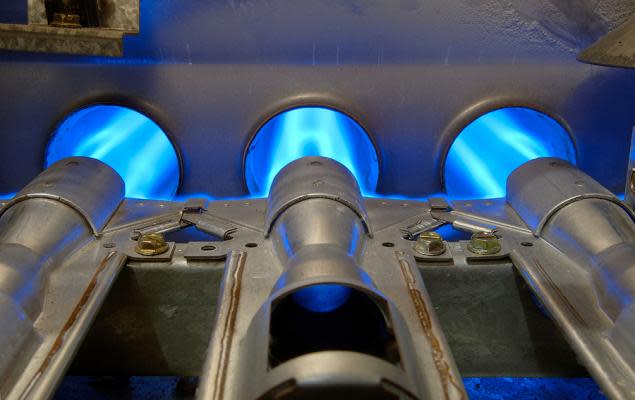Inverse Energy ETFs Rise Amid Steep Decline in Oil

The energy sector once again was caught in feeble trading in recent weeks on an oil price slump. This is especially true as oil prices are on their longest weekly losing streak since 2018, driven by concerns about a global glut and skepticism over the Organization of the Petroleum Exporting Countries and allies, known as OPEC+.effectiveness in implementing deeper supply cuts.
Both benchmarks slid to their lowest since late June and headed for a seventh weekly drop, with Brent crude futures dropping below $75 per barrel and U.S. crude falling under $70 per barrel (read: 4 Sector ETFs to Gain as US Crude at Lowest Since June).
The bearish sentiments have led to a surge in inverse or inverse-leveraged energy ETFs, as these fetched outsized returns on bearish sentiments in a short span. These are Direxion Daily S&P Oil & Gas Exp. & Prod. Bear 2X Shares DRIP, MicroSectors U.S. Big Oil Index -3X Inverse Leveraged ETN NRGD, Direxion Daily Energy Bear 2X Shares ETF ERY and ProShares UltraShort Energy DUG. These funds have gained in double-digits over the past month.
Inverse and inverse-leveraged ETFs either create an inverse short position or a leveraged inverse short position in the underlying index using swaps, options, futures contracts and other financial instruments. Due to their compounding effects, investors can enjoy higher returns in a short time, provided the trend prevails.
Behind the Slump in Oil Prices
The slump came despite a recent supply cut agreement from OPEC+. While OPEC+ agreed on a combined 2.2 million barrels per day in voluntary output cuts for the first quarter of the next year to rebalance the market and support prices, production from non-OPEC drillers has been increasing. U.S. supply, for instance, is reported to have risen from about 12 million barrels a day at the start of the year to more than 13 million barrels a day currently.
Adding to the concerns is the outlook for oil demand. According to a Bloomberg survey, China consumption is expected to grow by 500,000 barrels a day next year, less than a third of the increase seen in 2023. In the United States, many economists see a recession starting next year, further dampening demand prospects. Weak factory data from Germany are also weighing on the demand outlook (read: Oil Falls Below $80: ETF Areas to Win/Lose).
The oil futures market slipped into a state of contango, wherein later-dated contracts are more expensive than near-term contracts. This signals that supply is rising and demand is falling, paving the way for a drop in oil prices. This trend is likely to persist, at least in the near term.
Below, we have highlighted the leveraged ETFs in detail:
Direxion Daily S&P Oil & Gas Exp. & Prod. Bear 2X Shares (DRIP) – Up 26.8%
Direxion Daily S&P Oil & Gas Exp. & Prod. Bear 2X Shares seeks two times inverse exposure to the performance of the S&P Oil & Gas Exploration & Production Select Industry Index.
Direxion Daily S&P Oil & Gas Exp. & Prod. Bear 2X Shares has accumulated $68.7 million in its asset base and trades in a solid volume of around 17 million shares a day on average. The fund charges 95 bps in annual fees.
MicroSectors U.S. Big Oil Index -3X Inverse Leveraged ETN (NRGD) – Up 15.4%
MicroSectors U.S. Big Oil Index -3X Inverse Leveraged ETN offers three times inverse exposure to the Solactive MicroSectors U.S. Big Oil Index, which is equal-dollar weighted and provides exposure to the 10 largest U.S. energy and oil companies.
MicroSectors U.S. Big Oil Index -3X Inverse Leveraged ETN has accumulated $123.9 million in its asset base. It charges 95 bps in annual fees and trades in an average daily volume of 1.6 million shares.
Direxion Daily Energy Bear 2X Shares ETF (ERY) – Up 12.8%
Direxion Daily Energy Bear 2X Shares ETF provides two times inverse exposure to the Energy Select Sector Index. It has an AUM of $23.7 million and trades in a good volume of 447,000 shares.
Direxion Daily Energy Bear 2X Shares ETF charges an annual fee of 95 bps.
ProShares UltraShort Energy (DUG) – Up 12.7%
ProShares UltraShort Energy seeks two times inverse exposure to the S&P Energy Select Sector Index, charging investors 95 bps in fees.
ProShares UltraShort Energy has amassed $15.9 million in its asset base and trades in a lower volume of more than 216,000 shares per day on average.
Bottom Line
While the strategy is highly beneficial for short-term traders, it could lead to huge losses compared with traditional funds in fluctuating or seesawing markets. Further, their performances could vary significantly from the actual performance of their underlying index over a longer period compared with a shorter period (such as weeks or months) due to their compounding effect (see: all the Inverse Equity ETFs here).
Still, for ETF investors bearish on the energy sector for the near term, either of the above products could make an interesting choice. Clearly, these could be intriguing for those with a high risk tolerance and a “trend is the friend” belief in this specific corner of the investing world.
Want the latest recommendations from Zacks Investment Research? Today, you can download 7 Best Stocks for the Next 30 Days. Click to get this free report
Direxion Daily Energy Bear 2X Shares (ERY): ETF Research Reports
ProShares UltraShort Energy (DUG): ETF Research Reports
Direxion Daily S&P Oil & Gas Exp. & Prod. Bear 2X Shares (DRIP): ETF Research Reports
MicroSectors U.S. Big Oil Index -3X Inverse Leveraged ETN (NRGD): ETF Research Reports
